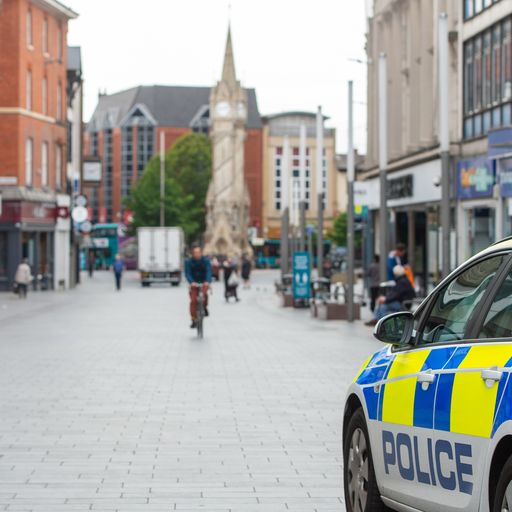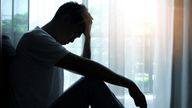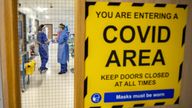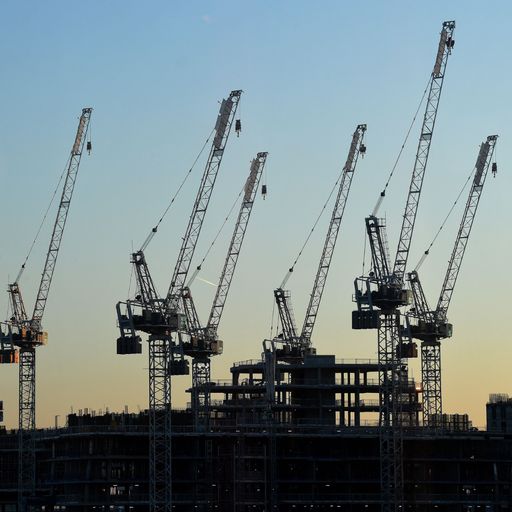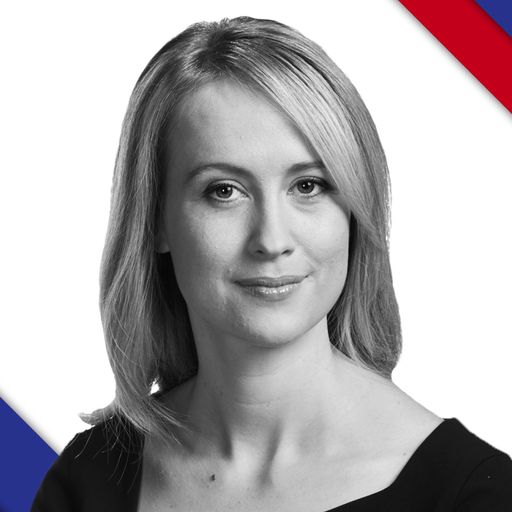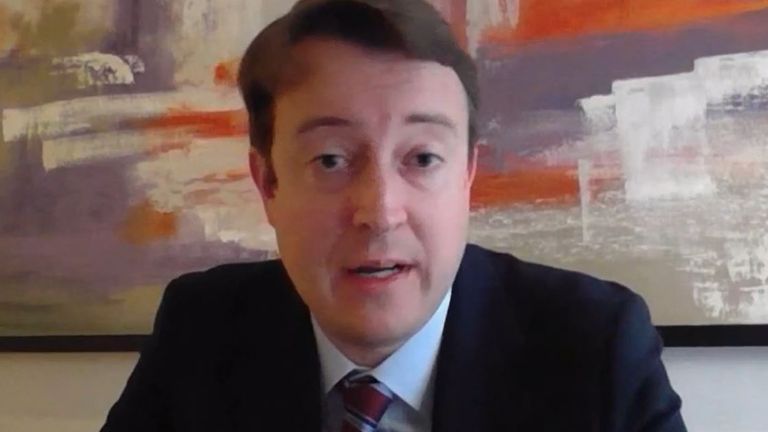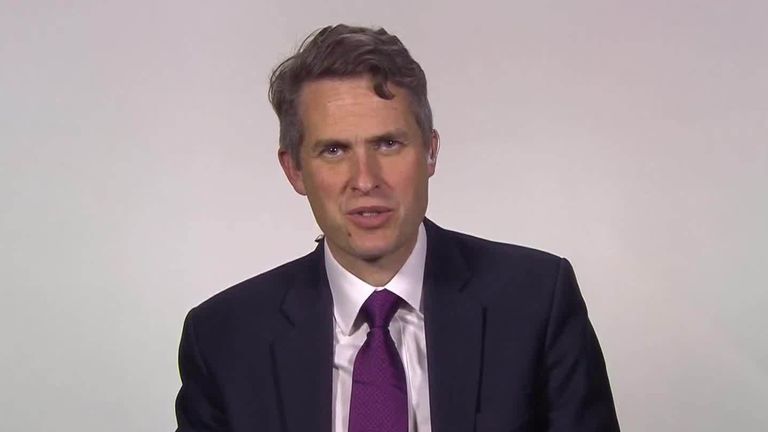Coronavirus: How pupils and teachers could have to self-isolate if there is an outbreak
School leaders in England have also been told there is no need for pupils of any age to sit apart when they return in September.
Thursday 2 July 2020 16:24, UK
"Small groups" of pupils and staff may have to self-isolate for up to 14 days if there is a positive case of coronavirus in a school or college, according to new guidance.
But the Department for Education has said that "where there are two or more confirmed cases in a two-week period, health protection teams may ask a larger number of other children or young people to self-isolate at home as a precautionary measure".
Closing an entire school "will not generally be necessary" if they implement the recommended controls, the guidance states.
A mobile testing unit can be dispatched to test others who have been in contact with the person who has tested positive for COVID-19.
Testing will focus on the person's class, followed by their year group, then the whole school if required, the guidance says.
School leaders in England have also been told there is no need for pupils of any age to sit apart when they return to class in September.
Boris Johnson has promised a full return to the classroom five days a week from the autumn term - with the government facing intense pressure to ensure children do not lose any more school time.
Under the new guidance, self-contained classes or "bubbles" - which cannot mix - will be expanded to allow all children back.
In primary schools, the maximum size of bubbles has been raised from the current level of 15 to 30 children.
The pupils and their teacher must still maintain distance from other classes.
For secondary schools, where older pupils choose multiple subject options, whole year groups - of up to 200 pupils - will be permitted to form bubbles, with social distancing optional.
Schools have been advised on how to minimise the numbers of pupils in each group with measures such as staggered start times and extra hygiene precautions.
The guidance also says:
- Teachers should distance themselves from each other and older students
- Children and staff will not be required to wear face coverings when in school, but children over the age of 11 will be required to do so if travelling in on public transport.
- For school transport, pupils should "sit with others from their group and remain in their class or year group 'bubble' wherever possible".
- Schools will be expected to have plans in place for pupils who are self-isolating, including offering remote learning.
- Ahead of the start of the summer holiday, the restriction on group sizes for nurseries, childminders, and other early years providers will be lifted from 20 July.
Education Secretary Gavin Williamson, who confirmed this week that attending school will be compulsory from September, is likely to face intense questions about safety from MPs and teaching unions.
There is also expected to be a Downing Street press conference later - the first since the daily briefings were ended last month.
Headteachers say there has been confusion about the social distancing requirements for children who are already back at school.
Guidance to schools in May said two-metre distancing should be followed "where possible", and many schools have been trying to enforce it, but the Department for Education insist it is not compulsory.
Keeping pupils in bubbles of up to a maximum of 15 has meant that extra teachers and classroom space are required for each year group that returns.
Kevin Courtney, joint general secretary of the National Education Union, told Sky News: "If staff are going to have confidence in this, government scientists need to look at the practical reality of how this would work and then sign off on it.
"They need to say that this would not lead to an increase in the transmission rate. They need to look at how it would actually work, not just words on a piece of paper, what's the practical reality?
"We think in most schools it's going to be very difficult to keep those big secondary bubbles separate from one another."
Local government minister Simon Clarke told Sky News that "the risk of transmission through children, between children is much lower than it is for the adult population and the risk is lower".
He added that coaches would be put on for school children so they avoid public transport when returning in September and those who live near schools should consider walking.
Claires Court school in Maidenhead is a private school charging fees of up £6,000 a term. It has brought back its entire primary school and some secondary pupils with distancing.
Executive headteacher Justin Spanswick said the school was "very lucky" to have the space and resources to do so, adding that local state schools with larger class sizes had found it very difficult.
The school plans to keep all pupils in smaller bubbles of 10 to 12 children, even if permitted to include the whole year, to avoid large numbers having to isolate if one child develops COVID-19 symptoms.
Mr Spanswick said the school - where every child is issued with their own laptop and headphones - was running live lessons online for pupils who are shielding or unable to return.
There is growing evidence that the gap between the most and least advantaged pupils has been widening during the lockdown, with huge variations in online learning.
A 20-minute drive from the school, in Slough, 15-year-old Bilal Mohammad, who shares a laptop with his three brothers, is worried about falling behind ahead of his GCSEs next year.
He has not attended his state school for more than three months and says the online work he is sent is limited: "I've lost loads of months, from March onwards, all of that time and all of that content I've lost. I feel the stress is on me to catch up with all this work."
:: Listen to the Daily podcast on Apple Podcasts, Google Podcasts, Spotify, Spreaker
Professor Calum Semple of Liverpool University, a consultant in paediatric respiratory medicine, supports a full return to school but says pupils should distance from their teachers and other staff.
He said: "It would be best practice if children could maintain a one-metre distance from their schoolteachers and other adults.
"You have to remember that if anyone is at risk in the schools it's going to be the adults, not the children.
"One of the good things that's come out of all the research we've been doing is that we understand that children are not at risk of severe COVID."

